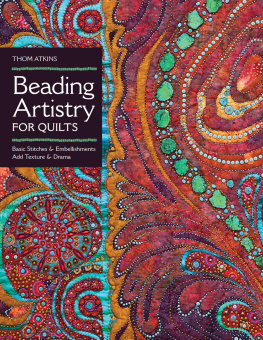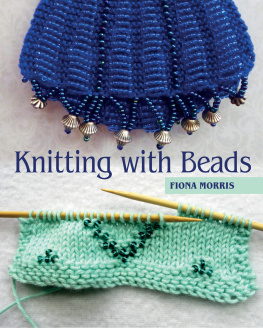The mission of Storey Publishing is to serve our customers by publishing practical information that encourages personal independence in harmony with the environment.
Edited by Deborah Balmuth and Nancy D. Wood
Art direction and book design by Mary Winkelman Velgos
Text production by Jennifer Jepson Smith
Cover photographs by John Polak Photography
Illustrations by Gayle Isabelle Ford
Indexed by Nancy D. Wood
2008 by Karen Morris
Ebook version 2.0
November 20, 2015
All rights reserved. No part of this book may be reproduced without written permission from the publisher, except by a reviewer who may quote brief passages or reproduce illustrations in a review with appropriate credits; nor may any part of this book be reproduced, stored in a retrieval system, or transmitted in any form or by any means electronic, mechanical, photocopying, recording, or other without written permission from the publisher.
The information in this book is true and complete to the best of our knowledge. All recommendations are made without guarantee on the part of the author or Storey Publishing. The author and publisher disclaim any liability in connection with the use of this information.
Storey books are available for special premium and promotional uses and for customized editions. For further information, please call 1-800-793-9396.
Storey Publishing
210 MASS MoCA Way
North Adams, MA 01247
www.storey.com
LIBRARY OF CONGRESS CATALOGING-IN-PUBLICATION DATA
Morris, Karen.
The beading answer book : solutions to every problem youll ever face:
answers to every question youll ever ask / Karen Morris.
p. cm.
Includes index.
ISBN 978-1-60342-034-1 (pbk.: alk. paper)
ISBN 978-1-60342-731-9 (ebook)
1. BeadworkMiscellanea. I. Title.
TT860.M6687 2008
745.582dc22
2008017997
To all my beading students:
thank you for letting me know what you
wanted/needed to learn.
Contents
Introduction
Whether youve been beading for a while or youre entirely new to the craft, youve doubtless got lots of questions that need answers. But finding those answers can almost require becoming a full-time sleuth, searching through piles of books, class handouts, and magazine articles at least it did until now. The book youre now holding conveniently provides answers to all the key beading questions youre likely to have while youre learning, from the essentials of stringing to how to get started with special techniques such as bead crochet. So tuck this little beading bible into your bag and keep it handy. It will serve as a faithful companion and guide while you travel the often topsy-turvy road to beading knowledge.
The students in my classes are always bursting with questions. I have gathered more than 300 of the most urgent questions together in this book, and answered them as if we were sitting together in a private class. But unlike information given in a class, these answers will be available to you anytime, anywhere, day or night.
If youre new to beading, you may look at the sheer quantity of information contained in these pages and say, Good grief, what are they talking about? Its true; beading can seem overwhelming at first. But once youve taken the first few steps, Ill bet, if youre like me, that youll just want to learn more; and little by little, the information will fit together and make sense.
One great thing about the diversity of beadwork is that we are all beginners at some aspect of beading! What we love is the process of discovery and adventure. Beads are like puzzle pieces tiny particles of color and light that can be arranged and configured in an infinite variety of pleasing ways.
Many of us spend our days working with numbers and spreadsheets, or words and contracts, or difficult people (feel free to toss in a couple of toddlers and piles of laundry here). I invite you to step away from all that for a moment, and try bringing some light and color into your life. Just a few minutes of working with your beads, even if youre only organizing them, can cleanse your mind of prior thoughts (what was it that I was worrying about?) and refresh your outlook, like a form of meditation.
Please join us.
CHAPTER 1
Getting Started
What Is It About Beads?
Q: What does the word beading actually mean? And what are some of the different ways to use beads?
A: Beading is a general term that refers to making or embellishing something with beads. And the word bead is a broad category that includes any small decorative object that has a hole in it or has been pierced to form a hole for stringing. Beads then can include drilled seeds, shells, pearls, and stones, as well as beads made of glass, wood, and plastic.
You can string a group of beads to create a necklace or bracelet; weave beads together with a needle and thread to make everything from jewelry to sculpture to tapestries; sew beads to embellish a garment or other fabric; and even knit and crochet with beads.
Q: Why do people make such a big deal about beads?
A: Throughout history, people have decorated their bodies with beads, so much so that beads help date the earliest existence of human life on the planet. The use of beads is thought to indicate a certain level of cultural complexity and development, and beads are among the oldest human art forms. Several beads made from Nassarius shells are thought to be the earliest known forms of jewelry. Until recently, the earliest beads were assumed to date to 38,000 years ago, but newer discoveries in Algeria and Israel may push the date back to 75,000 or even 100,000 years ago.
Nassarius shell bead
Q: Why is beading irresistible? I find myself very attracted to beads, their colors and patterns, and to the idea of wearing them.
A: If youre attracted to beads, youre in good company. Just about every culture for thousands of years has incorporated beads into their clothing, rituals, and religions. From protecting newborn babies from evil spirits to .) After watching, youll wonder why everyone you know isnt into beading! (Whats wrong with them? Do they have any idea what theyre missing?)
Q: I saw a beaded sculpture made entirely from pencil points woven together. Why does this piece qualify as beading?
A: The definition of a bead includes just about any small object with a hole in it. If the pencil points have holes drilled in them so they can be strung together, then technically, each pencil point is a bead. Dramatic beaded jewelry and sculpture can be made from traditional, expected materials such as glass beads and chunks of turquoise, or from surprising, refreshing materials such as drilled pencil points, metal washers, nuts, mesh hardware cloth, and clear plastic tubing cut into bead lengths. Once you start to tune in and notice beading, the diversity will delight and inspire you. For more on these unexpected beading materials, check out the work of Jennifer Maestre and Ingrid Gold-bloom Bloch. (See .)
Q: A lot of beadwork Ive seen is made with teeny-tiny beads. I dont think I can work with them! Can I still enjoy beading?
A: . When it comes to bead sizes, its important to remember that the larger the number, the smaller the bead. So, 6 are the larger, easy-to-see seed beads and 15 are the really small ones.



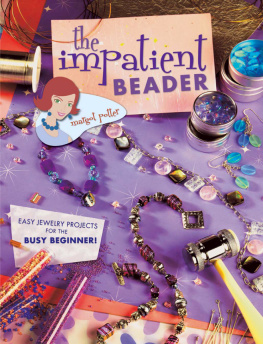
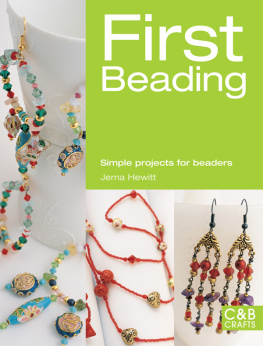

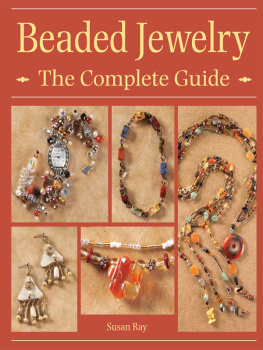
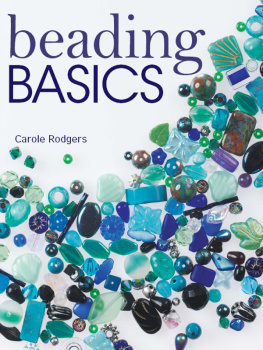
![Danielson Ethan - The beaders bible: [a comprehensive guide to beading techniques]](/uploads/posts/book/197332/thumbs/danielson-ethan-the-beader-s-bible-a.jpg)
